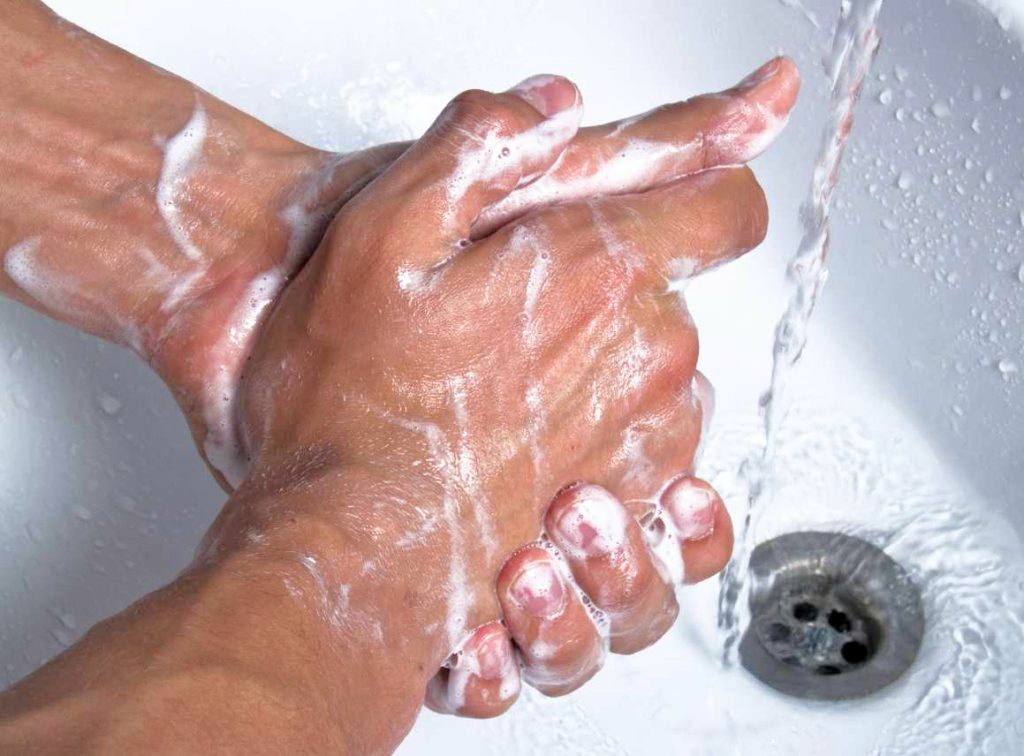-
COVID-19
Mayo Clinic Q and A: Skin protection with excessive hand-washing, masking

Dear Mayo Clinic: Frequent hand-washing and cleaning during the COVID-19 pandemic has made my hands so dry that my skin in cracking. With recommendations for everyone to now wear a face mask while in public, I’m concerned about the mask rubbing across my face and irritating the skin. What is the best way for me to soothe my hands and prevent more irritation on my face?
Answer: Hand-washing remains the best defense against the spread of viruses, including SARS-CoV-2, the virus that causes COVID-19. But frequent hand-washing for an extended period of time can cause the natural moisture and oils in your skin to be washed away, resulting in dry and cracked skin.
Increased use of cleaning agents and disinfectants, as well as hand sanitizer, also is contributing to skin irritation for many people, especially those who may have eczema or are susceptible to contact dermatitis.
The best recommendation to soothe skin and limit irritation is to consider adjusting the way you do certain tasks. For instance, wear gloves while cleaning or prepping food or washing dishes.
When you wash your hands, use warm or cool water and use a soap that is hypoallergenic, and free of irritants and perfumes. Bar soap tends to have fewer chemicals and more moisture content. Then pat dry. Never rub.
After washing, apply an allergen-free or hypoallergenic moisturizer. It’s personal preference if you want a lotion, a cream or an ointment. Lotions are the weakest of the three with regard to moisturizing because they have more water content. Lotion goes into the skin quite well but will evaporate faster. If you don't feel your hands are moist enough after applying moisturizer, simply wait 30 seconds to a minute and then reapply.
Creams are like lotion, but have less water content and tend to be thicker. They take longer to absorb into the skin. Ointments sit on top of the skin. They essentially prevent or slow the evaporation that naturally happens off the skin.
If you have significant skin irritation or dermatitis, you may want to apply a double layer of moisturizer anytime you wash your hands. At nighttime, add a generous amount of petroleum jelly or similar ointment on your hands and cover them with cotton gloves overnight.
For some people, aloe may provide relief, although prolonged use should be limited.
If layered moisturizing is not helping, you also may try a wet dressing.
- Before bed, wash your hands and pat them dry.
- Put on two layers of your thickest, most effective hypoallergenic lotion or cream ― not ointments. Ointments won't absorb into the skin.
- Put a teaspoon of white vinegar into a glass or small bowl of warm water, and soak two clean washcloths.
- Wring them out and wrap around your hands.
- Cover your hands with dry cotton socks.
The warm water and vinegar soak adds more moisture and helps adjust the pH, which keeps the skin clean. The heat or the warmth of the wrap and socks allows the pores to open up and lotion to soak into the skin more effectively.
Skin irritation of the face would be handled similarly by using bland soap and applying facial moisturizer. A hypoallergenic moisturizer that is made for the face is preferred. Apply a thick layer before you put a mask on and after you remove it. Avoid ointment-based moisturizers while wearing a mask because they will only cause sweat and oil to become trapped.
For overly irritated areas, including the bridge of the nose, chin or behind the ears, a thick layer of zinc oxide also can soothe the skin.
If you have a choice in masks, choose cotton fabric that can be easily laundered or washed by hand. If your skin is naturally sensitive, be sure that you wash the mask with detergent that is free of fragrance, dyes and other irritants. — Dr. Dawn Davis, Dermatology, Mayo Clinic, Rochester, Minnesota
Information in this post was accurate at the time of its posting. Due to the fluid nature of the COVID-19 pandemic, scientific understanding along with guidelines and recommendations may have changed since the original publication date.
Check the Centers for Disease Control and Prevention website for additional updates on COVID-19. For more information and all your COVID-19 coverage, go to the Mayo Clinic News Network and mayoclinic.org.







